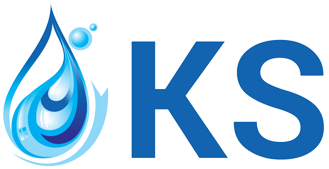The applications of Commercial/Industrial Reverse Osmosis Systems are widespread throughout industries such as Manufacturing, Food & Beverage, Hospitality, Institutionalized Education, Healthcare, Metal Finishing, Powder & E-Coating, Chemical Synthesis, Coolant Production, Automobile Assembly and many more. Due to the many contaminants and dissolved solids found in most sources of water, adequate purification becomes critical to so many common Industrial and Commercial processes. Albeit other techniques of achieving very high resistivity water exist, Reverse Osmosis is among the most preferred in the Industrial settings of Toronto for several reasons.
Why Reverse Osmosis?
Commercial/Industrial Reverse Osmosis offers many advantages over Water Distillation and Deionization Systems. Reverse Osmosis is relatively low-cost, high efficiency and very easy to maintain over the long run. Where Distillation is very expensive, Reverse Osmosis offers economy. Where Chemical Deionization poses harm to the environment, Reverse Osmosis is eco-friendly. Reverse Osmosis Systems are the best choice for Commercial and Industrial applications of purified water.
Reverse Osmosis Storage & Instrumentation

It is very common for Industrial companies to request large polyethylene storage tanks for the adequate storage of Reverse Osmosis water due to the relatively low flow-rates associated with the technology. In Toronto, Industrial Reverse Osmosis Systems produce very little water directly and require sufficient storage measures to be effective in use. This includes Reverse Osmosis Electronic Control Systems, Polyethylene Storage Tanks and Reverse Osmosis Instrumentation including Batch Controllers.
Types of Reverse Osmosis Systems
Commercial and Industrial Reverse Osmosis Systems are available in sizes from as little as 0.25 GPM (Gallons Per Minute) to well over 100 GPM (Gallons Per Minute). What typically varies between different models of Commercial and Industrial Reverse Osmosis Systems is the size and quantity of Reverse Osmosis Membranes. These come in 24” and 40” lengths with widths of 2.5” and 4.5”. A few examples can be found below:

Reverse Osmosis Systems, especially those that are installed in Toronto, house anywhere from 1 to 36 Industrial Reverse Osmosis Membranes, depending on the application at hand. Typically, Industrial Reverse Osmosis Systems with fewer membranes produce less Reverse Osmosis water per minute. This is simply because higher flow rate Reverse Osmosis Systems require more outlets through which to produce permeate output. Reverse Osmosis Membranes are typically made of an active thin-film layer of polyamide layered with polysulphone. This makes for the porous, semi-permeable characteristic of Reverse Osmosis Membranes. Reverse Osmosis Systems, with their membranes, electronic controls, storage solutions, batch processing and pretreatment are designed to ultimately produce only the highest resistivity and lowest conductivity water.
